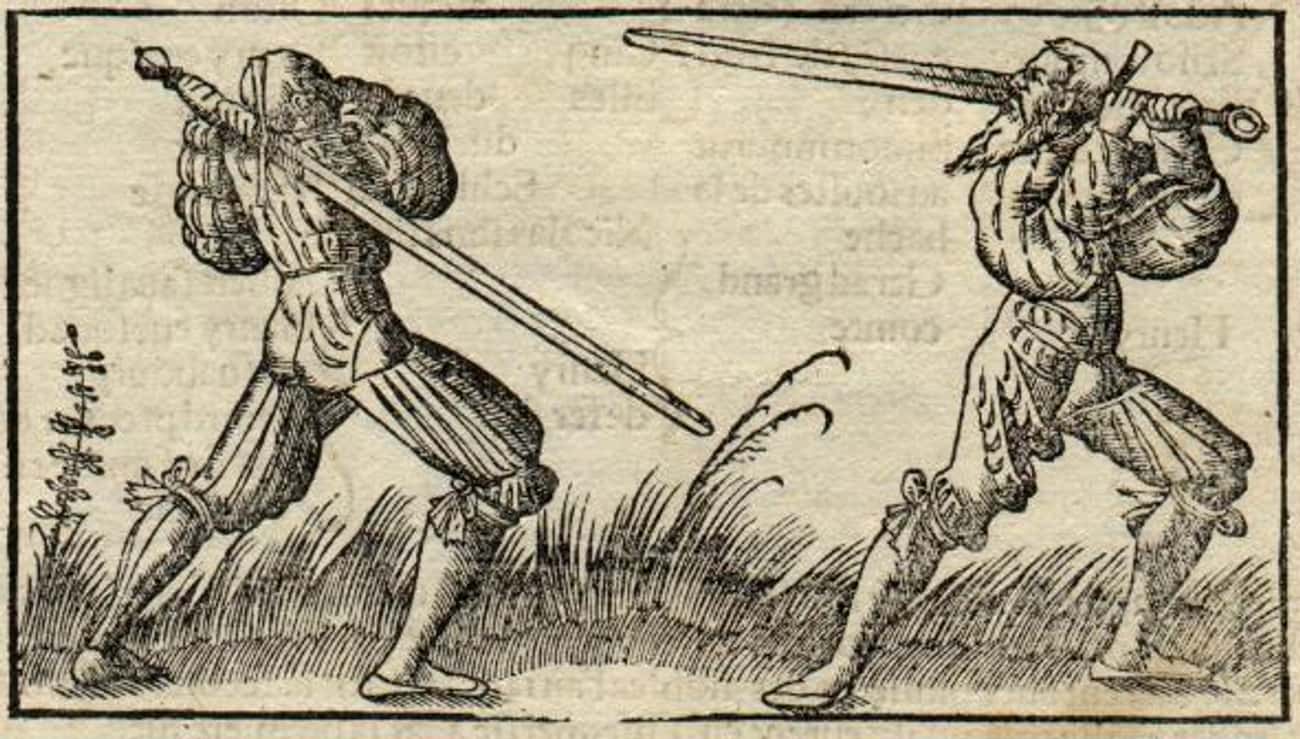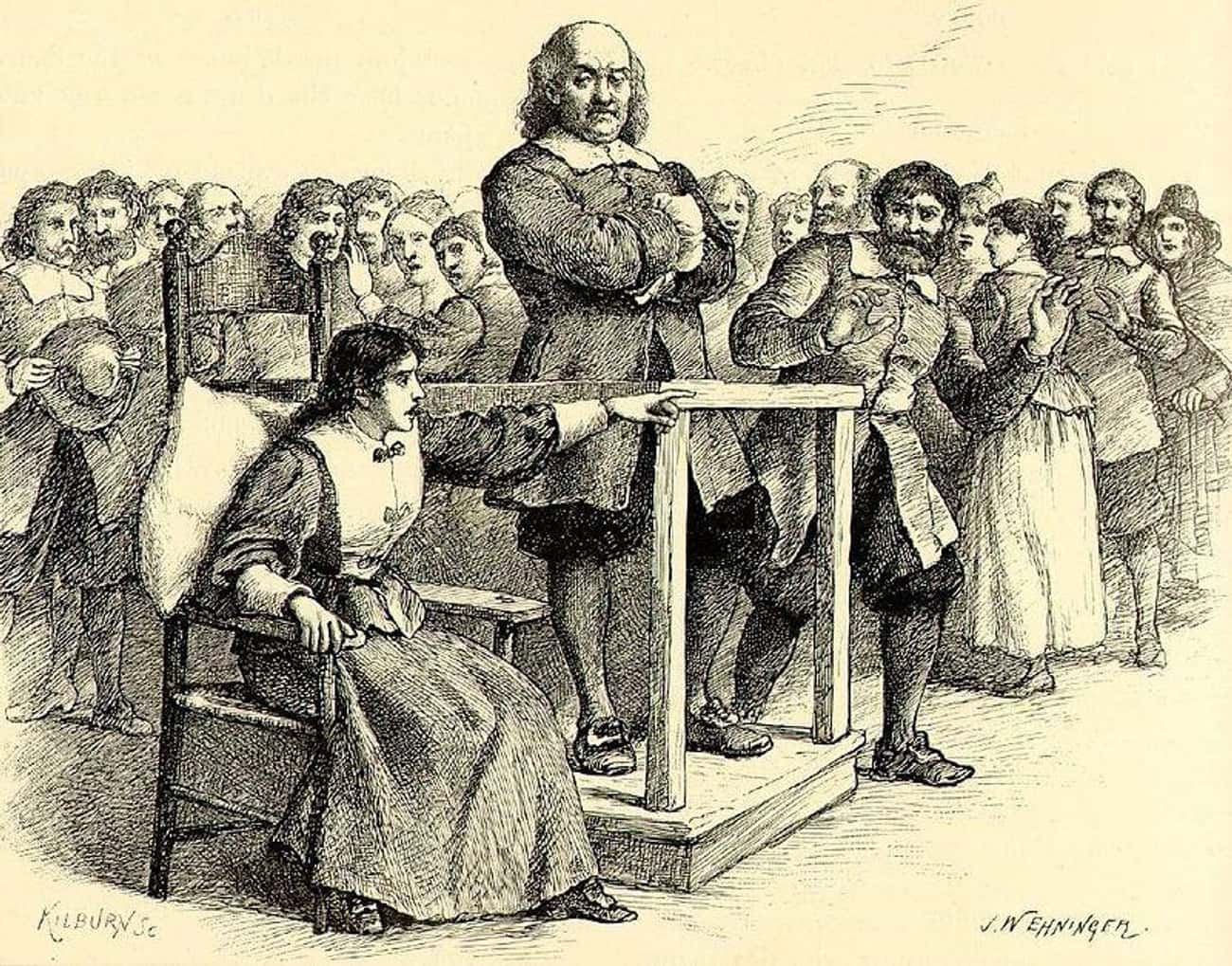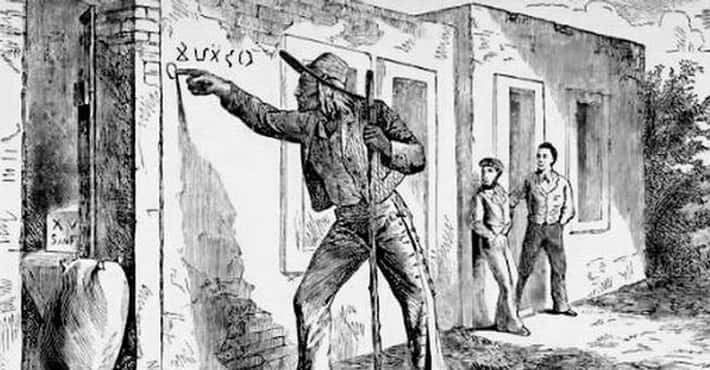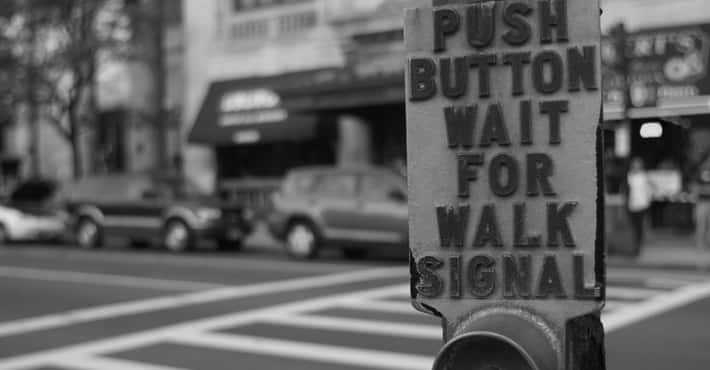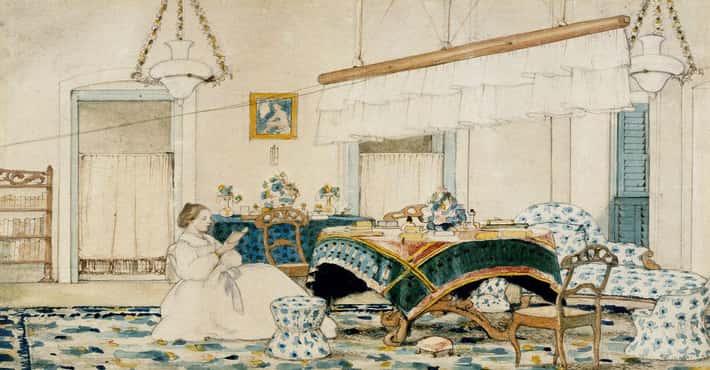
A History Of How The Left Hand Became Associated With Evil And The Devil
Left-handers have it harder than righties. Not only do they have to face scissors that won't cut and the pain of writing for long periods of time in a spiral notebook, but they also have to contend with a long history of stigmatization. Left-handedness has historically been regarded as the mark of the devil, and during the Salem Witch Trials, it was considered the sign of a witch.
Although attitudes toward left-handedness have changed over the past 50 years, laws against preferring the left hand existed as recently as the 1970s. For as long as movies and media convey that the devil sits on the left shoulder, the idea that left-handedness is evil will be present in the culture.
- Photo: Sebastian Münster / Wikimedia Commons / Public Domain1
The Ancient Celts Valued Left-Handedness For Its Advantage In Combat
The ancient Celts came to celebrate left-handedness because they realized the benefit it could provide in combat. The Kerr family of Scotland treasured the characteristic after it gave Sir Andrew Kerr a leg up in a sword fight circa 1513. The Kerrs even built their castle specifically for left-hand use.
Kerr taught his sons and armed guards to hold their swords and axes in their left hands because he believed it gave them an advantage against their enemies.
- Photo: Wikimedia Commons / Public Domain2
In Roman Augury, The Left Was Considered Favorable
In early Rome, augury was the practice of divining messages from the gods based on the movements of birds. Augures, or priests who performed augury, assigned significance to the direction birds flew.
In Greek culture, birds that flew from the right were considered positive signs from the gods, but Romans believed the opposite. Roman augures marked templums, or sacred spaces in the sky. If a bird flew into the templum from the left, it meant the gods approved. Flying in from the right or from behind meant they disapproved.
- Photo: Brooklyn Museum / Wikimedia Commons / Public Domain3
Inca and Maya Cultures Viewed Left-Handedness Positively
In Inca culture, left-handedness was associated with good deeds. The name of Inca chief Lloque Yupanqui means "left-handedness." People admired him for his goodness.
The ancient Maya similarly viewed left-handedness with favor. The Maya term for left is dziic, which is derived from dziicil, meaning "soldier" or "brave."
- 4
The Left Became Associated With Femininity And Inferiority
The left has historically been associated with femininity, which eventually came to represent weakness or passiveness. Right-handedness, which has always been more widespread and dominant, came to be associated with masculine traits that conveyed power. In ancient Greece, for instance, the right side was linked to strength and virtue.
Many religions, including Hinduism, Jewish Kabbalah, and Christianity, all make the same association between gender and handedness.
- Photo: Didier Descouens / Wikimedia Commons / CC BY-SA 4.05
The Bible Associated The Right With Being Blessed
Both subtle and apparent moral associations are made with the left and right sides in the Bible. For instance, Jesus sat at the right hand of God, while the archangel Gabriel was said to sit at the left.
In the Book of Matthew, Jesus - in a shepherd metaphor - is said to allow only those to his right side into heaven upon his return to Earth:
When the Son of Man comes in his glory, and all the angels with him, then he will sit on his glorious throne. Before him will be gathered all the nations, and he will separate people one from another as a shepherd separates the sheep from the goats. And he will place the sheep on his right, but the goats on the left. Then the King will say to those on his right, "Come, you who are blessed by my Father, inherit the kingdom prepared for you from the foundation of the world."
- Photo: Francisco Rizi / Wikimedia Commons / Public Domain6
The Spanish Inquisition Sometimes Slew Left-Handed People
During the Spanish Inquisition, left-handedness was associated with witchcraft and people who didn't practice Catholicism. Lefties were condemned and sometimes even slain.
- Photo: Maurycy Gottlieb / Wikimedia Commons / Public Domain7
Anti-Lefty Sentiment Appears In Jewish Texts
The Torah gives preference to the right over the left several times. For example, Shlomo says, "A wise man’s heart is at his right, but a fool’s heart is at his left." Schlomo also seats Batsheva, his mother, to the right of him.
Additionally, se’mol (שְׂמֹאול) in Hebrew means "left side," and it's derived from Samael. Per the Talmud, Samael, who became Satan, sits on God's left-hand side.
- 8
African Cultures Viewed The Left As Lesser
Several African cultures had stigmas against the left. The Zulu people punished children who were left-handed by dipping the left hand into a pot of scalding hot water, thus rendering it unusable.
African communities along the Niger River held similar biases. Women were commanded to cook with their right hand. Should they have cooked with their left hand, they would have been accused of witchcraft or of attempting to poison the food.
- Photo: William Webb Wheeler / Wikimedia Commons / Public Domain9
The Maori Of The South Pacific Inflicted Punishments Against Left-Handedness
The Maori once believed the right side of the body was the side of life, whereas the left was the opposite. The women who wove ceremonial cloths were required to do so with their right hands. They believed that if the work was done with their left, it would curse the cloth. A woman found using her left hand could be slain.
- Photo: John Whetton Ehninger / Wikimedia Commons / Public Domain10
Left-Handedness Sent Women To The Stake During The Salem Witch Trials
Left-handedness was cited as proof of being a witch during the Salem Witch Trials in 1692. At least one woman, Mary Barker, was burned in part because of her preference for her left hand. A court cited this trait as evidence for why Barker was a witch:
The Examination and Confession of Mary Barker of Andover. After several questions propounded and negative answ’rs Returned she at last acknowledged that Goody Johnson made her a witch, And sometime last sumer she made a red mark in the devils book with the fore finger of her Left hand, And the Devil would have her hurt Martha Sprague, Rose Foster and Abigail Martin which she did upon saturday and sabath Day last, she said she was not above a quarter of an hour in comeing down from Andover to Salem.
- Photo: Wikimedia Commons / Public Domain11
Well Into The 20th Century, Psychologists Classified Left-Handers As Having Emotional Issues
Around the 1950s, Abram Blau, a prominent psychoanalyst from America, speculated that left-handedness was correlated with perversity and obstinacy. Blau believed left-handers grew up to be rigid and sometimes obsessed with cleanliness.
Similarly, British psychologist Cyril Burt asserted that people who were left-handed grew up to be "stubborn" and "awkward."
- Photo: OpenClipart-Vectors / pixaby / Public Domain12
Into The 1970s, Teachers Punished Students Who Used Their Left Hand
School teachers, particularly Catholic ones, punished students physically and mentally for being left-handed. Although exhibiting a preference for the left hand became more widely accepted, it was still occasionally associated with the Devil and even Communism.
- Photo: Robert Schediwy / Wikimedia Commons / CC BY-SA 3.013
Left-Handedness Was Illegal In Albania During The 1970s
Across the Soviet Bloc, countries passed laws to limit citizens' use of their left hands well into the 1970s. Elsewhere in Europe, governments mandated that all writing in schools be performed with the right hand.
The most stringent laws against lefties occurred in Albania, where being left-handed was outlawed entirely.
- Photo: Pierre André / Wikimedia Commons / CC BY-SA 4.014
Lefties Likely Became More Accepted When Companies Realized They Could Market To Left-Handers
Companies eventually realized that because left-handed people couldn't use some right-handed products, such as scissors, there was money to be made in creating products for left-handers. Starting in 1968, William Gruby began a shop called Anything Left-Handed, Ltd., which sold left-handed versions of items like kitchen appliances and watches.


